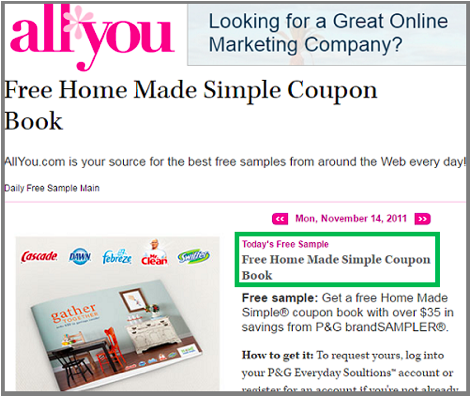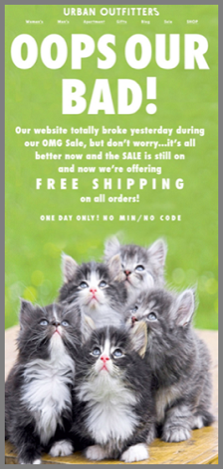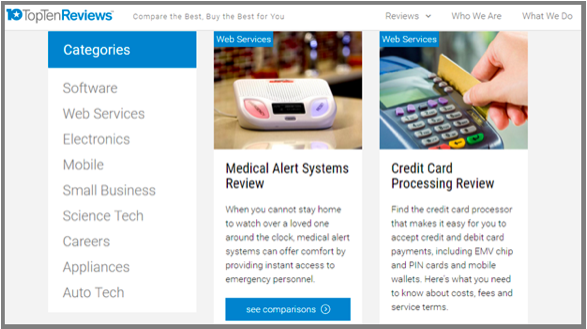“PB120: Should You Start a Blog? 22 Questions to Ask To Identify if Blogging is a Good Fit for You” plus 8 more | |
- PB120: Should You Start a Blog? 22 Questions to Ask To Identify if Blogging is a Good Fit for You
- How to Effectively Drive More Facebook Traffic to Your Blog
- Top Tips for Creating Quality Evergreen Content
- How to Build Trust With Your Subscribers Through Personalizing Your Emails
- How to Network at Blog Events (Even if You’re Shy!)
- Reading Roundup: What’s New in Blogging Lately?
- Making Landing Pages Work for You With Multivariate Testing
- 7 Simple Ideas for Mailing List Opt-Ins
- How (and When) to Register a Trademark Without Hiccups
| PB120: Should You Start a Blog? 22 Questions to Ask To Identify if Blogging is a Good Fit for You Posted: 02 Jun 2016 02:00 AM PDT Note: this episode can be listened to in the player above or on iTunes or Stitcher 22 Indicators to Help Determine If You’re Suited for Starting a BlogToday I want to talk about the characteristics and qualities of professional bloggers. Lately on ProBlogger we've noticed a bit of a surge of readers who are what I would call 'PreBloggers'. People asking questions about how to start a blog and even wondering if they should. As a result we've recently published a 5 step guide for starting a blog which walks you through some of the technicalities of how to start out. I want to step back a little from that process and tackle an important question that really should come before you start your blog. Should you start one? Today I want to suggest to you 22 questions to ask yourself if you are considering starting a blog. These are not yes or no questions. These are 22 indicators to whether or not you might be suited to blogging. In Today's Episode 22 Questions to Ask To Identify if Blogging is a Good Fit for You
If you have gone through this list and answered no. You are not alone. I struggled with many of these things, but I still did it. This list is to give you some areas to work on and be aware of before you start blogging. I asked on my Facebook page for bloggers to tell me the top 3 characteristics and qualities that they see in bloggers. I was thinking I might get a handful of responses that I could use in this episode but the response was quite overwhelming. I'm going to list some of the first responses below but even by the time that I'd gotten these in there are many more already being added. So to see the full list of advice head here. Top 3 Characteristics of Bloggers From My Facebook Page
Trudie Bristow – Success is many things to many people, but as for qualities and characteristics that allow particular bloggers to connect with their audiences and do it well I’d have to say:
Kate Shelby
Brooke Ciccozzi – A great blogger should be:
Enjoy this podcast? Sign up to our ProBloggerPLUS newsletter to get notified of all new tutorials and podcasts below.
Never miss an episode – Subscribe to the ProBlogger podcast on iTunes Got a Question You’d Like Me to Answer?I base many episodes of this podcast upon questions answered by ProBlogger Podcast listeners and Blog readers. You can use the following widget to ask a question. Please include your name and blog name (if you have a blog). The post PB120: Should You Start a Blog? 22 Questions to Ask To Identify if Blogging is a Good Fit for You appeared first on ProBlogger Podcast. |
| How to Effectively Drive More Facebook Traffic to Your Blog Posted: 01 Jun 2016 08:00 AM PDT
Facebook is an incredibly powerful tool for bloggers. However, if you were to poll 100 bloggers in different niches, you'd likely discover that well over half of them aren't maximizing the potential of the world's largest social networking site. Would you count yourself among this contingency? If so, it's time that you reevaluate your situation and take a more aggressive approach. The Power of FacebookFacebook has been such an integral part of our personal lives that the professional side of us doesn't always appreciate how powerful it is as a business resource. As of last count, Facebook has 1.04 billion daily active users and 1.59 billion monthly active users. That's billion with a "B". The massive reach and ubiquitous nature of Facebook makes it an extremely powerful tool for businesses, brands, and bloggers. Where else do you have a captive audience of a billion people seeking to interact with others? From a blogger's perspective, there are two major benefits of Facebook. Some bloggers extract more value from the first, while others find the second more powerful. Regardless, both components should be utilized to some degree. Target Audience InsightsFirst off, Facebook is often used as a resource for learning more about a specific target audience. As a blogger, much of your business is about creating content that resonates with readers and encourages them to read, share, come back, etc. Well, the only way to do these things is by understanding who these readers are, and Facebook is the answer. "Facebook allows brands to face their audiences and literally enter into interactions with them," says Agata Kwapien of datapine, a leader in business intelligence technology. "This potential, when handled properly, can generate brand loyalty and better insights into customers' opinions, needs and interests." While you can figure some basic information out by reviewing blog analytics, there are certain elements of your target audience you can't possibly understand without seeing them on a more personal level. By watching, listening, and interacting with your readers on Facebook, you begin to see who they are, what interests they have, and what makes them tick. Traffic GeneratorSecondly – and most importantly – Facebook is a traffic generator. Scroll through your own personal newsfeed and observe the behaviors of your friends. Gone are the days where people post status updates and tell you what they're doing. Now, the primary Facebook actions are the "share" and the "like." Facebook users share news articles, videos, images, and blog posts with friends, which drives traffic to these pages and leads to more sharing and liking. It's a continuous cycle that yields impressive results for bloggers who are able to connect with their target audiences. 5 Tips for Maximizing Facebook TrafficMost bloggers understand the value of Facebook, but don't necessarily have a tangible strategy in place for using it effectively. In this article, we're going to discuss ways to maximize Facebook as a traffic generator. Here are just a few of the techniques and best practices you need to be using: 1. Utilize Facebook Advertising and Targeting FeaturesIf you have a monetary budget for advertising, Facebook is a great place to start. It's important to note that there are a number of different strategies, though. If you aren't careful, or don't know what you're doing, it's possible to run through your budget very quickly. For starters, understand that there are many different advertising objectives available. You can choose from clicks to website, website conversions, page post engagement, page likes, app installs, app engagement, offer claims, local awareness, event responses, and video views. The first key is to choose the right objective. Most bloggers gravitate towards page likes, page post engagement, and clicks to website. These will help you maximize your goals of driving traffic, both now and in the future. Check out this article to get an idea of how successful bloggers spend their budgets. After choosing an objective, the next big task is targeting the right users. This is really the strength of Facebook advertising when compared to other social media platforms. Because Facebook knows so much about its users, you can hone in on a very small group of users that you believe are target readers. Spend some time getting familiar with targeting features and test out different audiences. Generally speaking, the narrower you get, the better results you'll see. However, you should avoid alienating everyone. Depending on the budget, somewhere between a few hundred thousand and a few million people is a reasonable range. 2. Vary Your PostsYou don't have to spend money on paid advertising to benefit from Facebook. There are plenty of organic ways to leverage the platform as a traffic generator. One thing you really need to focus on is the types of posts and content you're sharing on Facebook. While you're primary purpose of being on Facebook is to drive traffic to your blogs and increase awareness, you can't take a blatantly self-centered approach. There needs to be some diversification in what you post. Sharing five of your blog posts every day without any other interactions makes you seem selfish and disengaged. There needs to be a healthy mixture. A good rule of thumb to follow is the 70-20-10 Facebook Posting Rule. This rule says that 70 percent of the content you post should be relevant ideas that are curated from other places, 20 percent of the content should be sharing other's ideas and posts, and only 10 percent should be promotional in nature. In other words, only one out of every ten posts should be one of your own blog posts. This may seem dramatic, but think about it from the perspective of your followers. If you're only sharing your own content, then you look desperate and selfish. However, if you're also sharing other content that your followers will find helpful, then you appear genuinely interested. And when you do share one of your own links, it holds more value. 3. Create Shareable Blog ContentHonestly, it all starts with the content you create on your blog. If the quality of your content is poor, you'll earn a bad reputation and people won't want to click on your posts. If the quality is good and the topics are engaging, then you'll generate more buzz. What you think is interesting versus what your followers think is interesting can sometimes vary significantly. Remember, you aren't in the business of creating content you like to read. You're in the business of creating content that others want to read. Research shows that Facebook users like to share how-to's, reviews, personal stories, lists, videos, and posts that seem too good to be true. Pay attention to the type of content your Facebook friends and followers are sharing. This is a good indication of the types of content you need to be creating. 4. Use Clickable Headlines and ImagesWith more than a billion active daily users, Facebook is busy. Most people have hundreds or thousands of friends, which means their newsfeeds are constantly filling up with new content. The key to successfully generating traffic from your posts is to rise above the noise. You may only have a few minutes to stand out, so make the most of your impressions. While the quality of your blog content certainly matters, you have to attract clicks in the first place. And when it comes to Facebook, users make the decision to click based on two factors: the headline and the image. After all, that's what Facebook presents to them! If you aren't spending a significant amount of time crafting clickable headlines, then you're missing out on a lot of traffic. Some even suggest spending as much time on the headline as you do on the post. According to Sarah Burke of Spokal, a popular content marketing tool, "The pros know exactly how important creating headlines are, so they often follow the 50/50 rule which is when you spend just as much time on your headline (and the first few words/lines of your copy) as you do on creating your entire piece of content." That may sound like overkill, but it's impossible to devalue the importance of the headline on Facebook. The second element that draws people in is the image. Research shows that Facebook posts with images get roughly 120 percent more engagement than posts with no images. Make sure you're using large images that are high quality and unique. Try to stay away from boring stock photos and instead look for colorful images that spark the curiosity of users. 5. Create Video Recaps of PostsAs a blogger, it's a bit frightening to see how quickly video is taking over Facebook. A quick scroll through your newsfeed will reveal dozens of videos. How can you leverage your audience's affinity for video without moving away from what you do best? One strategy is to create video recaps of posts. Short video recaps of posts allow you to gain traction on Facebook by reaching those followers who prefer to watch content as opposed to read content. You don't have to record your posts word for word and line by line. Instead, shoot a 30 or 60-second spot where you touch on one of the key points in the article. The hope is that the viewer will then want to click to read the entire post. Putting it All TogetherFacebook is an extremely powerful tool. And as they say, with great power comes great responsibility. If you aren't maximizing Facebook as resource for generating traffic, then you're missing out. It certainly takes a lot of time and discipline to fully leverage Facebook as a marketing tool, but it's well worth it in the end. Keep these five tips in mind and always keep the end user in mind. It may be your blog, but the readers should influence the direction you take and strategies you choose. Larry Alton is an independent business consultant specializing in social media trends, business, and entrepreneurship. Follow him on Twitter and LinkedIn. The post How to Effectively Drive More Facebook Traffic to Your Blog appeared first on ProBlogger. |
| Top Tips for Creating Quality Evergreen Content Posted: 31 May 2016 08:00 AM PDT
If you're like most bloggers, you publish a solid combination of evergreen and time-sensitive content. The time-sensitive aspect is simple enough as long as you stay abreast of industry news and updates. But what does it take to write really compelling evergreen blog content? While you can't necessarily predict how your blog posts will be received, you can write with the following food for thought in mind. Evergreen Content: A DefinitionIf you're unfamiliar with the concept of evergreen content, it's not hard to grasp. Basically, evergreen posts never lose their relevancy. An evergreen piece you write tomorrow should still have the same value to readers several years down the line. Of course, not every topic lends itself well to evergreen content writing. News about an up-and-coming Apple product, for example, would count as time-sensitive. A review of a newly released product might also be time-sensitive. However, a post about how to write product reviews would be evergreen. Further Reading:
Let's break this down a little further: What "Timeless" Really MeansA lot of bloggers define evergreen content – also called pillar content – as "timeless." In some cases, this is an accurate definition. "How To" guides, like the above example of "How to Write Product Reviews," are often considered evergreen. But there's a difference between "How to Write Product Reviews," which could theoretically be applicable to any writer reviewing any product, and something like "How to Set a Keyboard Shortcut on a MacBook." While the advice in the first example is unlikely to change significantly, the second could change – easily. Operating system updates change their organization, navigation, and other features as different updates are released, so setting a keyboard shortcut five years ago would have been a slightly different process. Noticing a trend yet? Tech writing is notoriously hard to make evergreen because even instructional pieces are subject to change, often much sooner than even savvy industry writers expect. Other topics writers struggle to make evergreen include political content and fashion writing. Bloggers working in fast moving industries have to dig a little deeper to create this kind of post. Luckily there are a few general post formats that lend themselves well to evergreen writing, no matter the field. When Older Content Makes SenseOlder content can have value if it's been updated to remain relevant. Some content that might not be "evergreen," per se, is still valuable because of how search engines work. Google allows searchers to specify a date for the content they're looking for – and because these searches are performed, it makes sense to keep this old content if you see that the page continues to remain active. Keep track of your analytics, though, because if an old page could use a boost in the search rankings, it might make sense to take another look at the content. Odds are good you can update or repurpose much of it. If we're following from the above example, the second "How To" guide would still remain relevant if the writer were to update it to include changes to the Mac operating system and software. It may not be precisely evergreen, but it also isn't the kind of content that's difficult to update. HubSpot draws a distinction between "timeless" and "sustainable" content for this very reason. Some otherwise timeless content will need to be regularly updated to reflect the most valuable information available for readers, but this content can still be considered evergreen – in its sustainable form. Be sure to earmark posts that you think may fall into the sustainable category, or that you may forget to update. After all, unlike truly evergreen content, this material is only sustainable if you put in the work to make it that way. The Many Forms of Evergreen ContentIn all likelihood, you've already published content that could be considered evergreen – ideally in your first weeks of blogging. A "How To" guide is one such example and includes such subgenres as recipes, hair or makeup styling tips, or fitness tips, but there are other pages on your blog or website that may fit the bill. Here are some of the other kinds of evergreen content for your consideration. Frequently Asked Questions. If you're tired of receiving the same questions over and over (or you anticipate that you'll receive a certain question), place it on a FAQ page with your response. This is a great example of sustainable content, because you can add questions as they crop up and provide answers that a lot of readers are looking for. Glossaries. As an industry expert, you know what all the words on your site mean – but, depending on your field, your readers may not. Avoid alienating your audience by providing an easily accessible page that defines terms and phrases they might not yet understand, and make sure to point readers in that direction early on. No one likes stumbling through a post, only to find out that everything they needed to guide them was readily available on another page. "History Of" Posts. History is, by definition, in the past – which means it won't change. Consider doing some research about a little-known aspect of your niche or industry and providing that information. Or, dig up a few famous innovators from years past or people who inspire you and profile them for your blog. If your post is the only resource on the internet that details this history, it will have tremendous value to researchers interested in your niche – for many years to come. Checklists: Checklists are similar to "How To" posts, but with a twist. Rather than giving directions on how to perform a task, these posts provide just a basic outline. The magic of a checklist, however, is that it offers accountability and productivity benefits. Everyone likes crossing off a completed task, so why not build content around the process? If you don't already have any published blog posts or articles that use these formats, head to the drawing board and think about what you want to put out there. Once you create them, evergreen posts make great internal links, so you're sure to reference them frequently. Making It LastSome content that isn't generally considered evergreen can easily be made to fit the bill with just a few adjustments. Consider posts on how to stay productive at work. Many of these posts namedrop apps that may not be relevant in even a few months' time as device updates appear. But you could write the same post without this type of time-sensitive information. Just go analog – skip the apps and write about your other strategies instead. This same philosophy goes for many other "tips" posts, as well. You just need to think outside of the box. Can't figure out how to write web design tips that don't rely on current platforms or tech capacities? Just back it up. Web design may be a modern topic, but graphic design and its ilk have been around forever. Turn to the old pros for timeless design tips instead. Another way to make create evergreen content out of normally time-sensitive material is to get more specific instead of less. Did a client just do something incredible with your help? Or has your company overcome a major obstacle to achieve a goal? Turn these time-sensitive news pieces into case studies instead. A case study is a highly specific, yet broadly imagined kind of "tips" post. You're sharing exactly how a specific company or individual accomplished something great. Readers love specific examples, drawing them to this kind of content. And what's more, it's much easier to load a case study with keywords and other SEO-friendly information than it is to do the same thing in a news post about the same event. Further Reading:
Skip The Master ClassWhen writing evergreen content, it's important to understand who your audience is. Experts are rarely the target audience. That's because the level of knowledge and the type of information experts need tends to land more squarely in the time-sensitive camp. They know the basics and are busy innovating at a higher level. Instead, try reframing your understanding of evergreen content towards a beginner to intermediate level audience. These are the readers who need guidance, and who are learning the ropes. Beginner level readers want to get their feet wet on the subject, while intermediate readers may need a refresher on a process or topic they've only worked with a few times before. And as they learn, they'll click their way along to more complex, time-sensitive material. If you do feel you need to engage experts with your evergreen content, you're best off situating the expert as source. This makes beginning readers feel that they're in reliable hands, and it's more likely that the experts in the field will share the content with staff and colleagues. Writing a post about online stock trading? Frame it as advice from a senior broker and, if you've done it right, watch it take off again and again. That's the power of evergreen content. Put It to WorkOnce you've developed your evergreen content, make sure you've positioned it for success. You might create a list of top blogs or a directory of information for beginners. Then, put it as a main header on your site or in another noticeable place. You want site visitors to find this information quickly and easily, otherwise they may go elsewhere for their info. Don't forget to post your evergreen content to social media. Even though social content is infamously time sensitive, evergreen material also has a place. Make it intriguing and readers will still flock to it. When you see a drop off in readers in your analytic data, wait a short time and launch it again. There are always new readers to reach, whether they've just joined the field or missed the original post in the mass of social content that comes our way each day. Final Thoughts: Evergreen Content and Your BlogAs you work on your evergreen content, remember to always think back to your blog and what it’s about. What kind of content should represent you? What do you want your readers to feel? Interspersing evergreen posts in your blog will show these readers that you want to help them by providing information that will remain useful for years to come. But remember, even dictionaries are updated every few years, so don't pretend "evergreen" means "untouchable." Anna Johansson is a freelance writer specializing in entrepreneurship, technology, and social media trends. Follow her on Twitter and LinkedIn. The post Top Tips for Creating Quality Evergreen Content appeared first on ProBlogger. |
| How to Build Trust With Your Subscribers Through Personalizing Your Emails Posted: 30 May 2016 08:00 AM PDT
Max E. Mailer is an email marketer. Every day, Mailer would send hundreds of emails to carefully cultivated leads. Every day, he'd be disappointed by the lack of response to those emails on which he worked so hard. What was the problem? Why wasn't he managing to capture people's attention? Then, one fateful day, he did something new. He crafted a passionate email which was too precious to just throw out to some random people. He addressed each and every lead by their first name. He personalized the emails. Sales increased drastically. His company began to get noticed. And his life was never the same again. Mailer's problem is one that many of us encounter. But his solution is not what most of us go for. Let's consider what the data suggests. According to a report, a staggering 94 percent of businesses say personalization is critical for their business. But, according to another report, only 5 percent of companies personalize extensively. Personalization works. And it makes sense too. Why would anyone be interested in seeing your email, no matter how crafted it is, if it doesn't address them? None of us is Hillary Clinton except, of course, Hillary herself. The nation is not holding its breath to read our emails. This is why we personalize. But how do we do that exactly? That is the question. Here Are The 6 Best Non-Obvious Email Personalization Techniques.1. No Catch Free StuffWho doesn't like receiving stuff for free? Granted, your organization is a business, not a charity. You are hoping to gain profit on its content, products, or services, not to distribute them for free. But this is a bitter pill you need to swallow to get your message out there. "Compelling ideas and stories must reach a tipping point before they start to gain momentum. And the best way to push them over the edge is to be generous," says Jeff Goins. "Giving away your work will allow future customers (or readers or fans or whatever) the opportunity to hear about it, see the value, and then reward you for it." Remember, your marketing emails need to provide value to the customer. No one deserves to spend their precious time reading your email without getting something out of it. Here's an example of a clever free stuff marketing strategy: 2. Sending Oops EmailIf you are a content or product marketer, you would know that mistakes happen. To err is human. If such a thing occurs, don't worry. Don't panic. It's not the end of the world. In fact, it's just the opposite. It's an opportunity to connect with your customers or readers. The best way to do that is to send oops email. Sounds nice, but what exactly is an oops email? An oops email is when you send an email to your customer to apologize for some earlier mishap. Whether your website crashed or you sent a wrong email earlier, oops email is the way to go. Just remember to use crafty subject lines to get better open rates. Give the customers a chance to exonerate you and move on. To forgive is divine. And how can the customers not forgive you if you send an oops email like Urban Outfitters did? 3. Sending Alert EmailsA triggered email alert program can do wonders in terms of attracting customer attention. It's a smart marketing strategy as well. Not only is it marketing your content, product, or service, it's also providing value to the customer by keeping them updated about the kind of stuff they're interested in. Automated, yet personalized, email alerts are a cheap and effective means of staying in touch with your customers. You can use any of the available email personalization software without even budgeting $1000 for content marketing. Here's an example of an email alert sign up form: 4. Giving Subscribers New Content Before Anyone ElseWhen the customers subscribe, they're doing you a favor. Remember that. And remember to pay them back for those favors. But how do you that? One simple way to make your subscribers feel special is to offer them exclusive content before you offer it to anyone else. This gives your subscribers a sense of exclusivity, a feeling of being in a club, being unique, being different from everyone else. According to Laura C. George, "this is a strategy that gets you email signups and, if you continue to do it well, makes them stick around." To give you a better idea of how to make the email recipients feel exclusive, here is one from Brian Dean of Backlinko: 5. Letting Subscribers Control How Often They Hear From YouWhen it comes to email marketing, there's a fine line between being consistently repetitive enough to let your message sink in and being annoying enough to turn your customers off or lose them entirely. So, as a marketer, it's your responsibility to control how often your customers hear from you. In your email preferences, include a frequency option. Make it easy for the customers to unsubscribe from your emails, but also consider this: There's a whole lot of ground to cover between sending 10 emails a day to a customer and letting them unsubscribe. These two are opposite ends of the spectrum. Frequency preferences are what lie in between. They give the customer a flexible range of options to choose from. Used effectively, these can also act as one of the many email marketing metrics to assess your marketing strategy. Bonobos does it in a clever way: 6. Segmenting Which Type Of Content They Get From You"If content is king, segmentation is queen," says Paralee Walls. This is the best description of content or marketing segmentation. No matter how well-written your articles are, how high-quality your content is, or how qualified your experts are, it would all go to waste if it doesn't reach the right audience. So, you need to let the audience choose which type of content they get from you. For instance, if you are writing about various topics from politics to celebrity news, you need the right target audience for each topic. This review website does it right: Content marketing can be frustrating for some, especially for those whose salaries depend on it. If you found any of this information helpful, share this article to get them out of tight spots. Bill Achola is a content marketing consultant specializing in content writing and marketing at Billacholla.com. He works closely with B2B and B2C companies providing the right content that generates social shares, comments, and traffic back to their business blogs. The post How to Build Trust With Your Subscribers Through Personalizing Your Emails appeared first on ProBlogger. |
| How to Network at Blog Events (Even if You’re Shy!) Posted: 29 May 2016 08:00 AM PDT
Blogging can be such a solo sport, thousands of us tapping away at our laptops in our own homes across the world, talking to everyone online but rarely in person. It can be a bit confronting to come out from behind your computer and not only have to speak to strangers face to face at blogging events, but also keep it together in front of those you admire. Having been to a number of blogging events myself, I know first hand how it feels when you’re an introvert and you’re suddenly among thousands of (semi-familiar) strangers, having to make small talk and not have food in your teeth and promote your brand and do all the right things in front of the right people. I also know first hand how amazing it is to break through the nerves and have great conversations, make awesome connections that lead to incredible opportunities, have a raging time, and make some new friends. I can’t speak highly enough of showing up in person to events and making the most of them. How to Network at Blog Events (Even if You’re Shy!)Here are my top tips for working a room even when you want to hide in the corner behind a pot plant and stalk everyone on Instagram. Yes, I’ve been there… Remember: You’re among friendsReally, everyone who is there has a blog or online presence of some sort, and they’re all there for the same reason as you. So you’ve got something in common, and the likelihood that they’re also feeling a bit overwhelmed and nervous and shy is pretty high. Yes there will be people who are rocking it because they thrive on this kind of environment, have been to a million events before, and are right at home in a circle of people. If that’s not you, that’s cool. There’s also the people who are faking it until they make it – putting on a brave front even when they don’t feel it, and getting stuck in anyway. They usually find that once they start chatting they are more relaxed, and start to enjoy themselves. It is often the fear of speaking to strangers and doubt about the unknown that makes events a minefield for introverted folk. If you really want to sit behind a pot plant and scroll through the event hashtag on Twitter, that’s fine. But if you’ve come to meet people, be inspired and maybe make a friend, it’s worth swapping the cyclamen for a smile and at least a friendly remark in the ladies’ loo line (you’ll be surprised where that can get you!). Stalk on socialSo the night before or the morning of the event, check out everyone’s Instagram or Twitter feed – you’ll often see what others are wearing, what their faces look like, something that’s happening in their life right now you might be able to ask them about later when it comes to small talk, and you can even leave them a friendly comment like you’re looking forward to seeing them later in the day. This all helps you feel more comfortable when you’re looking for a friendly face in the crowd or are hunting down your blog crush for a brief hello. Question?Have a few pre-prepared questions in your head you can ask before the conversation gets awkward. General questions you can bust out to anybody – what’s your blog about? Do you live near here? Which speaker are you looking forward to hearing? Who here would you love to meet? Did you enjoy lunch? Whatever you can pull out of your conversational arsenal when the moment strikes. It’s also TOTALLY OK to not know every single blogger and be familiar with every single blog. People love you asking about their blogs, they’re not going to be offended that you don’t know who they are, and it’s totally not embarrassing to have never heard of someone before. Bloggers come from all walks and all niches, you don’t have to be across them all to have a friendly conversation. Here’s my cardIf you think it will help, have a business card printed before you go. You don’t have to spam everyone with them and throw them around like confetti, but if you meet someone you’d really like to get in front of, it can be helpful to give them a little card with all your details on it. Everyone’s meeting so many people it can be hard to keep track of what face belonged to what blog. The cards will help. Wear what you loveI can’t stress this enough! You want to be comfortable and confident, you don’t want to be hiding in your car or sitting down the whole time because you’ve worn something cool but inappropriate, or shoes that are fabulous but hurt so much you can’t stand. Of course you want to look good and make a good impression, but it’s hard to make a good impression when you’re stressing about your outfit and you don’t want to be seen. Wear what you love, whatever that may be. You don’t have to be in the fashion blogger league (unless you want to be!), and by all means treat yourself to a new outfit if that’s what you want, but feel good in it. Chat with the teamFind out who’s running the show (often they have a special lanyard or t-shirt) and chat with them. They might know another blogger who’d be good to meet, or give you good tips on what sessions might suit you. They’re also friendly and happy to talk to you anytime so you never have to feel alone in a sea of people who all look like they’ve been friends for years and this is your first day of school. Keep an open mindYou might have an idea of who you want to talk to and what you want to do, but don’t discount other bloggers you don’t know yet – anyone could lead to anything! The possibilities are endless, so be open to whatever may come. Go easy on the liquorI know, Dutch courage is awesome and most of us are 200% wittier after a glass of something, but you really can be drunk before you feel drunk and you will 100% say something stupid if you’re not in possession of your faculties. Keep the booze intake on the conservative side until you’ve taken care of business, then find a wingman or a tribe of your peeps and by all means party on. You never know who you might connect with on the dance floor busting a move to Madonna. Have a purposeHaving said all that, it can be super-useful to you to have a small bucket list of what you want to achieve at the event. Is it asking a specific person a question? Making sure someone else gets your card? An offer for a collaboration with a fellow blogger? Have a think about what will be good for you and try as hard as you can to tick off your to-do list. It can also help with nerves and that fish out of water feeling if you’ve got a task at hand and a purpose for the day. Do your homeworkHave a read through of the blogs of the people you want to meet. Think about how you can tailor your conversation to them, think of the questions you want to ask, or the thing you want to offer. Also have a think about where you are at in your blogging and how networking with these people can help. What do you want t oachieve? What is your favourite blogger’s favourite drink? offer to buy them one! Don’t be quiet at Question timeThis is the worst thing for all involved. The speakers WANT to answer your question. YOU want your question answered. The team WANT there to be a lively question session. You are only inconveniencing yourself if you don’t seize the moment and make use of question time. You’re not bothering anyone, it won’t be embarrassing, and all will be well. Just ask the damn question! Have an effective introductionI won’t go into elevator pitches or how to explain you and your blog in one minute or less, but as a personal blogger who finds it difficult to explain what I do, it’s WAY worse if I’m stumbling through a spiel and everyone’s feeling uncomfortable at my inability to answer a simple question. Even if you don’t have your niche mapped out, at least pick something to immediately convey the kind of blog you have. You can give further info later, but have a snappy response to the answer “what is your blog about?” and you’ll be way more memorable for all the right reasons. Follow upThe best thing to do after the event is to go home and reach out to people you’ve met to help them cement you in their mind. Tweet them or email and leave a little reminder as to which blogger you are as I dare say they met a fair few! Give them the info you promised, or reach out with an idea or feedback. “Can I write this down?”Don’t be afraid to take notes if you’re chatting with someone and they say something interesting or make a point you’d like to remember. Chances are you won’t remember, so grab a small notebook or put it in your phone. I promise no-one will think you’re senile or weird, they’ll probably be flattered that you’re keen to know so much about them. Go it aloneOh I know this is a hard one, but don’t be afraid of showing up to these things without knowing anyone, or without a wingman. I can guarantee if you go with a friend you’ll hardly push yourself out of that comfort zone to go and talk to people. If you’re alone then you’re more likely to strike up a random conversation or go speak to someone just so you’re not standing around looking lost and awkward. This is the time to think of your blogger bucket list and go track them down. Keep a lid on the nervesYou will regret it if you scurry off to your room or the loos and avoid everyone at all costs, I promise. Just grab your fake it till you make it face, think of one question you can ask just about anyone and remember that everyone’s there to meet people. If you finally get to that blogger you’ve always wanted to meet and then you freak out so much your mind goes blank, you’ll be kicking yourself later. Also, everyone is nervous! Even if it’s just a little bit. Even the confident bloggers are still a little bit concerned that you’ll be disappointed when you meet them, or they won’t live up to expectations, or people will think they’re fat, or they’ll say something dumb because they’re better at writing than they are at small talk with strangers. Everyone is in the same boat, so if you’re calm and relaxed (even if you have to fake it!), you’ll make everyone else calm and relaxed too. SpeakersBe strategic about catching them – they do often get swamped at the end of a session, so be aware of that. They also most likely have to rush off so the next speaker can get set up. Save your bigger questions for a different time and try to catch them at breaks, in between other sessions, or whenever you think they’ll be most receptive to a chat. But don’t (whatever you do!) assume it’s always a bad time and don’t seek them out, you will regret that too. They are there to speak to people, so it may as well be you! Stand near the tableThis is one of my favourite things to do. Hang by the registration desk and watch people coming in – you’re guaranteed to find someone to chat with! I also like standing near the food table – not only because I like to eat as much food as I possibly can at all times, but also because people are relaxed around food and I’ve had many a funny conversation with someone I’ve been desperate to meet over shitty tongs for the salad or fighting over the last baked potato. The other benefit is that almost everyone will go to the registration or the food table at some point, so you’re more likely to see them there than anywhere else. Stand aloneIt’s ok to stand alone and survey the scene before you. Someone might strike up a conversation, or you might spot someone in the crowd you want to speak to. Don’t hunch over your phone, worried that everyone will look at the weird blogger in the corner staring at everyone, chances are they’re either feeling weird too or caught up in their own business and they’re not judging you. Be the person everyone wishes they hadIf you wish that you could just sit there minding your own business and someone will come to your aid, then be that person for someone else. If you spot a frightened face behind a fern, go and say hi. If there’s someone lurking by the food table looking uncomfortable and out of place, make a joke about the food. Ask any and everyone a friendly question and be warm and encouraging. They’ll be so grateful you did and you will feel awesome too.
So what are your tips for making the most of face-to-face blogger interaction? Who have you met that you loved? Who are you wishing you’d met? What do you do when you’re super nervous and would rather blend in with the wallpaper? I’d love to chat about it! Also if you haven’t bought your ticket for PBEvent 2016, don’t forget you can get $100 off for the next few weeks. Stacey Roberts is the Managing Editor of ProBlogger.net: a writer, blogger, and full-time word nerd balancing it all with being a stay-at-home mum. She writes about all this and more at Veggie Mama. Chat with her on Twitter @veggie_mama, follow on Pinterest for fun and useful tips, peek behind the curtain on Instagram, listen to her 90s nostalgia podcast, or be entertained on Facebook. The post How to Network at Blog Events (Even if You’re Shy!) appeared first on ProBlogger. |
| Reading Roundup: What’s New in Blogging Lately? Posted: 27 May 2016 08:00 AM PDT Welcome to the weekend (well Friday for folks not in my timezone!) and this week’s reading roundup. I took lots of notes this week and learned some hard truths. The Emotional Combinations That Make Stories Go Viral | Harvard Business ReviewIf going viral is not a matter of luck (as first thought) but as a result of creating an emotional experience, then this is interesting reading. Content Creation Hacks: How to Quickly Produce Valuable Content | Social Media ExaminerI actually really love the historical content tip on this podcast, as I think it can work really well for brands – and bloggers too! Everyone loves a throwback. Better Inbox Productivity: 5 Tools for Reclaiming the 560 Hours You Spend on Email | Jeff Bullas*Signs up for Todoist’s Gmail extension* Achieve Stellar Results from Facebook and Instagram Remarketing | PPC HeroA timely reminder to perhaps think outside the box when it comes to advertising on these platforms, and that we can go in and edit a campaign that isn’t working as well as we’d hoped. 3 Unusual Lessons We Learned From Studying Over 16 million posts (and 100,000 Brands) on Social Media | BufferThese results were surprising but not surprising all at the same time – get on that video train if you’re not already! How to Solve Big Marketing Problems by Strategizing Like a Startup | CoScheduleI actually really love this advice, because it drives you to seek feedback on what’s working, even if you’re established. What would you do if you were starting your blog young and hungry? How would you stand out from the crowd if you had a product to sell? How to Calm Your Content Anxiety in Five Simple Steps | CopybloggerIf you’re overwhelmed and upset with the idea of coming up with fresh blog content every day forever, this one’s for you. The Power of the Mid-Tier Blogger | RackedThis was such an interesting read – that you can still be successful if you’re not the biggest name in the blogosphere. Love it. H/T to Carly Findlay for that one. What’s the ROI of Your Guest Posts? I Studied 273 Guest Posts on 78 Blogs and it Doesn’t Look Good | InboundWell there’s something nobody wants to hear! If you’re looking for traffic, you may have to look elsewhere. Three Things Email Marketers Should do to Stay Competitive | MarketingprofsI think going back to basics is an excellent tip. Well there you go – are you happy? sad? Going to think of something else to do other than guest posting for a bump in traffic? Going to be more zen about your content anxiety? See you on Monday for an epic post about how to navigate networking at blog events when you’re a shy type. Stacey Roberts is the Managing Editor of ProBlogger.net: a writer, blogger, and full-time word nerd balancing it all with being a stay-at-home mum. She writes about all this and more at Veggie Mama. Chat with her on Twitter @veggie_mama, follow on Pinterest for fun and useful tips, peek behind the curtain on Instagram, listen to her 90s nostalgia podcast, or be entertained on Facebook. The post Reading Roundup: What’s New in Blogging Lately? appeared first on ProBlogger. |
| Making Landing Pages Work for You With Multivariate Testing Posted: 26 May 2016 08:00 AM PDT This is a guest contribution from Mahesh Dabade ofTechLila. Now that products and services have taken up marketing on blogs and websites to a whole new level, you would be familiar with Landing Pages. Landing pages are specially-designed and set up pages for particular products, services or events. For instance, if you have a product launch coming along for your ebook or ecourse (or e-something!), it makes sense to create a landing page; with custom domain name and related stuff — so that you get better conversions. Also, when compared to setting up a fully-fledged website, landing pages are easy to be set up and publish, and there are WYSIWYG editors available with landing page creation solutions. Despite all these, testing is one of the must-have ways to get an effective and converting landing page. Indeed, you'd be familiar with A/B Testing, which has been used as an industry standard for a while. In A/B Testing, two versions of one page (or email mailout, or headline) are compared to each other, to find which one works better, resonates more with people, and gets more conversions. Now, however, we have a new method to ponder over — Multivariate Testing. In this article, we'll be talking about multivariate testing and how it can help you make landing pages work. Shall we start? How Multivariate Testing WorksBefore we talk about multivariate testing, you should know about different landing pages. A landing page may come with one or more elements. For instance, one landing page may have only a well-designed image. At the same time, another landing page may consist of different elements, such as sign-up boxes, images, text, videos etc. A page may also have some interactive elements such as social media buttons or so. Given that you have different elements in a landing page, you can move towards Multivariate Testing! Basically, Multivariate Testing is a mode of page testing that involves different kinds of element combinations. In the case of A/B Testing, an entirely different page is created and tested against the old one. In multivariate, however, different elements are placed in different sections to get different versions. Practically speaking, one version of page will have the product banner at the top; at the same time, another version will have the text box at top. The higher the number of elements goes, the higher the number of multivariate versions we get. These different page versions are then used for testing, with the traffic the page receives. Once the substantial amount of traffic has been poured into the versions of landing page, the real analysis can be done. Multivariate Testing analysis is done by comparing different versions of element organization. Several details will be taken into consideration: the time a user spends on the page, the clicks and scrolls made by the user, his/her reply to the call-to action etc. The input from each version is compared with that of other versions. Then, decisions are made, about the effectiveness of elements' organization. So, we hope you have an idea about the modus operandi of Multivariate Testing, as to when compared to common A/B Testing. Now, we will move on to the other aspects of Multivariate testing, such as advantages and limitations. When Should You Use Multivariate Testing?There is one critical condition to the Multivariate Testing to give you good results: it's that your landing page should receive substantial amount of stable traffic. It is only with stable traffic that you can test different versions of a page. As I said earlier, suppose your landing page has many elements, of various categories. You have different element layouts in your mind, but cannot decide which one is the most appropriate one. So, when you want to choose the effective organization of different elements, you can rely upon Multivariate Testing. Now that you know when to use multivariate testing, we will talk about its advantages. Advantages of using Multivariate TestingThe major Multivariate Testing advantages over A/B Testing are as follows:
The advantages are quite compelling, aren't they? Disadvantages/Limitations of Multivariate TestingOne of the main limitations of Multivariate Testing is its high traffic requirement. As we mentioned earlier, there are a huge number of landing page versions you'd get. To test and compare these versions, you need a lot of live traffic to the specific page in test. Not only that, your page should receive stable traffic. If that's okay for you, it's all good. When you are starting a landing page, you cannot really get the results from multivariate results. However, once you have got an idea about the page and have a good background support, you can use this kind of testing. When you're starting the journey, you will have to stick on A/B Testing or so. The reason is simple — the results are subtle. Because the testing method is way too precise, you cannot count on it when you want a complete redesign of pages! Otherwise, you will have to extrapolate the results given by multivariate testing. So, in short, it's for optimization and not for bigger design overhauls. Another disadvantage of Multivariate Testing is the absence of being sensible in some aspects. As you know, not all elements of your page may have effect on the conversion ratios. For instance, if you have an image that links nowhere, it is of no use from the conversion point of view. Even these elements will be tested in Multivariate Testing —using traffic resource of site —, which isn't a good thing. The Practical DealAccording to the experts, Multivariate Testing is quite useful for optimizing the landing page. You are not going to have a design overhaul, but the subtle changes can bring more conversions to you. Just think this way: wouldn't it be great if you can have better traffic by rearranging your product banner and sign up box, that too depending upon user response? Well, that is what you are going to get via Multivariate Testing. Also, thanks to the factorial nature, it is possible to get crystal clear decisions out of the output. ConclusionSo, we have talked enough about Multivariate Testing, which is considerably the effective way to test landing pages, websites and other stuff. Given that your site has stable and substantial amount of traffic — depending on the exact number of combinations from different versions —, you can make use of Multivariate Testing. Also, this testing isn't useful for bigger design overhauls. On the other hand, when you want to optimize your landing page for conversions and for more profit, Multivariate Testing makes enough sense, I bet. Do you use Multivariate Testing for your own landing pages? How have been the results? Do let us know through your comments. Mahesh is the Editor-in-Chief of TechLila. He has a great passion in SEO and Blogging. You can get in touch with him via these modes:Facebook and GooglePlus. The post Making Landing Pages Work for You With Multivariate Testing appeared first on ProBlogger. |
| 7 Simple Ideas for Mailing List Opt-Ins Posted: 25 May 2016 08:00 AM PDT
For a blog or business, a quality opt-in campaign is worth its weight in subscribers. Not only does a subscriber base give you direct access to the customers and readers that care most about your brand, but it also lets you target those who are most engaged and willing to come back for more. Truly, this is a marketing technique that should not be taken lightly – if you haven’t set up a mailing list, now’s the time. Bear in mind, however, that an opt-in campaign must be more than a simple newsletter or a glorified advertisement in your subscribers' mailboxes. People don’t part with their precious email addresses for just anything, the best opt-ins give them value, and promise even more down the line. You need to always be thinking how you can help your reader or solve a problem for them, and then make that the basis of your opt-in. Once they’ve signed up to your list, you keep providing value and helping them wherever you can. However, this is putting the cart before the horse if you haven't already attracted your subscribers. While you'll find that a small number of people will happily sign up for your marketing outreach as raving fans, you’re still going to have to put in some real effort to get new subscribers and keep them happy. Just as your opt-in campaign should focus on bringing readers and customers value, so should your methods for reeling them in. This means giving them something free in exchange for the subscription. 1. Free Information and UpdatesOf course, a newsletter will already be giving out free information and updates about your posts or products. But it's all in the way you sell it. Instead of just informing your website's visitors that you have a mailing list, sell it to them just as you would any other product. And in order to do that, you have to get into the mind of your customers. People like feeling that they're a part of an exclusive club, that they're getting the secrets that will put them ahead of everyone else and make them come out on top. To take advantage of this, tease them with tidbits you'll include only in your mailing list. The best part about this freebie method is that if you're an expert in your niche, it should be pretty easy to share your knowledge. But don't let that make you think you can provide your audience with something they could easily find on their own. Remember rule number one of opt-ins: provide value. Don’t take your space in their inbox lightly. Reward your opt-ins with regular, high-quality articles that they wouldn't be able to find anywhere else. Mailchimp and Constant Contact are two great platforms for creating and maintaining your email base. 2. Resource SheetIf your blog is in any way educational to your audience, they're going to want a way of finding other helpful links that will help them learn more about your niche. In return for signing up for your email or service, offer them a huge list of other resources they can turn to. You'll be providing your audience with that ever-important value while simultaneously adding authority to your brand. You don't necessarily have to list all of your competitors on this sheet; instead, think of related niches, topics, blogs and sites that will genuinely help your reader. These could be websites, books, tools, online communities, trade magazines–things you yourself use to become an expert in your niche. 3. Ebook Related To Your Industry or NicheEbooks are a great way to branch out with your service. Leverage your extensive knowledge into a short e-book that is helpful for your audience. The best part is, when creating an e-book, you don't necessarily have to start from scratch. It’s often enough to repurpose existing blog posts for new subscribers, but if you’re concerned about providing value for the long-termers then use those blog posts as a basis for an eBook and then include extra copy alongside. The de-facto platform for creating and hosting e-books is Amazon's Kindle Store, with which you have the extra benefit of marketing your brand to another audience. However, it isn't the best when it comes to giving away free books. Instead, use InstaFreebie, which allows you to upload your ebook file and generate a link for sharing. Plus, it integrates with Mailchimp. 4. Discounts on Your Products or ServicesWhile it may hurt you to give away your products at discount, there are some upsides. Firstly, discounts on older ebooks, courses, or content that isn’t top of sales any more can be a great way of keeping them moving. These discounts may even have the power to get your audience to purchase one of your products they perhaps weren't going to in the first place. Coupon codes are a great way to provide discounts to your audience. How you go about doing this will depend on the retailer you're using or the ecommerce system you have set up for the business part of your blog. In any case, you'll be able to generate discount codes that you can then pass on to your potential opt-ins. Offer these discounts in exchange for your users signing up for your email newsletter or subscription-based service. Even if they only sign up to receive the discount, chances are that many will stay subscribed to your service, especially if they find that your campaign provides them with value that they weren't expecting. 5. Unused MaterialsIf you have some material that you just haven't been able to use – for example, a lengthy blog post or guide – and you just can't figure out how to get it out there, consider giving it away for free. While you could go ahead and convert this material into a password-protected file, consider leaving it unlocked. If your audience decides to share it with others, that's free publicity for your brand. Chances are, this material that's been sitting around will be a little unpolished. While you may have kept it from release due to quality concerns, customers will be a little more forgiving if you're giving it away for free. Still, you should take some time to edit and perfect, just like you would with anything you release as part of your brand. Anything that shows an obvious lack of quality will turn off your audience and be a bad representation of your brand. 6. Case StudiesYou can use the freebie giveaway as an opportunity to teach your audience how to best make use of your blog. Consider giving users a collection of success stories that you or your readers have had from using the content they’ve found on your blog – post step-by-step instructions in how this success was achieved. Always keep in mind the reader of your case study: it should be well-formatted with headings, subheadings, bullet points, and pictures to easily guide the reader along. A case study is wonderful because it provides solid value to your audience, as they can model their own strategies off this success story. Plus, it has the added benefit of lending more authority to your blog and giving your audience more confidence in using it. After all, a confident audience is a repeat audience. 7. Counseling or GuidanceWhile this won't work for all situations, you could consider giving away some special guidance to readers who sign up to your mailing list. Such applications for this idea are an hour-long phone call or video chat, or a once-a-month catchup on something that they’re struggling with. How you apply this idea will depend on your schedule and availability. While this probably won't be appropriate for simple email sign-ups, it can be a good way to get readers to take the next step, especially when there are ecourses or other services involved.. There is one other upside to this idea: it will give you the social proof of being an authority in your field. If you're concerned about "wasting" your time and resources on giving something away, consider these two things: First, a freebie is an investment, and while you won't see returns immediately, they're guaranteed to bring in a bigger audience. Secondly, you can always find other ways to cut your expenses to make up for the fact that you're giving away something for free. Which opt-in type do you think would work best for you? Charles Crawford is a high-level entrepreneur and co-founder of Crawford and O'Brien. Charles has been studying internet marketing, web design, and tech start-ups for years, and he has been successful with multiple business ventures such as affiliate marketing (where 98%+ of users never make money). The post 7 Simple Ideas for Mailing List Opt-Ins appeared first on ProBlogger. |
| How (and When) to Register a Trademark Without Hiccups Posted: 24 May 2016 08:02 AM PDT
The best brand name in the world isn't worth anything unless it helps you make money. So why would you trade mark your name before you even know if you have a business? If you talk to lawyer who spends their working life immersed in IP law (intellectual property law), they usually want you to register your trade mark without delay. Let's be practical here. If you're starting a business, the best place to start is making money. If you're not making money, doing business is going to be hard work and not a lot of fun. Registering a trade mark is probably not your best top priority! Here's some food for thought:
Your brand protection can be a gradual process. So where do you start when trying to decide "To register, or not to register?". Step 1: Is your brand capable of trade mark protection?Huh? Let me explain. If commonly used words and expressions were capable of trade mark protection, there would be a lot of businesses unable to explain what they do. If you could trade mark words like 'bakery' or 'auto-repair' or 'blogger' then other people doing the same thing would not be able to use those words in business and we'd all end up in a pickle. Some general rules are:
So, what you can do is use a common word or phrase to differentiate a product or service from other businesses in the same industry where that would be unusual, like: Apple for computers Jockey for underwear Miller for beer, and Puma for shoes There are also times where a word that started as a trade mark has become a commonly understood term and is no longer capable of protection. Words that have become synonymous with what they are, like:
One of my accountant friends rang me the other day and said his client had applied to register a trade mark and been knocked back, and asked if I could help. Unfortunately, the name they tried to register was along the lines of '<town name> auto repairs', which is why it did not get through examination. So, once you think you have something that can be registered, what next? Step 2: Does your brand have value?Not every brand name makes a difference to how much money the business can make. It depends upon how you are set up and what you do with your business. Think about what your raving fans, followers or customers are going to look for when they search for you. If people follow you based on your name, then your name will have more value than a brand name. If people find you based on your product or service, and your brand does actually differentiate you from the competition, then there might be value worth protecting in your brand. Whatever avenue people use to find you is where you have greater value. ProBlogger is a great example. Some people will be looking for Darren Rowse, other people will be looking for ProBlogger. As bloggers, your personal identity might be what attracts your audience rather than the business you are building. So before racing out and registering anything, think about where the value lies. Step 3: Is there anyone else out there using your brand, or likely to?What is your risk, really? Back in 2011 a client of mine had a domain name that included the brand name of a product they sold. The brand name was registered in the United Kingdom as a trade mark of their supplier. So far, so good. Unfortunately, there was also a United States based supplier with the same brand name registered as a trade mark there. The US company came to Australia in 2013 and registered the trade mark without the knowledge of my client or their UK supplier. They then pursued my client for breach of trade mark. Leaving aside all the technical legal arguments that were open to my client, we looked at the business from a practical perspective. Sure, my client could have spent $150,000 and three years in court proceedings to prove their entitlement, but when we looked at the business, all the customers came through the email list and not through the website. The customers were interested in the product, but the business came through their relationship with my client. So we rebranded the business and trade marked the new brand, had a new website built with a domain name that didn't include a trade mark and transferred all the customers over to the rebranded business within 90 days. My client kept the business, protected it for the future and didn't spend a fortune of time or money in legal dispute. We even had the US company buy the domain name for $3,000. In that case, if my client had registered the brand as a trade mark in Australia, knowing it was registered elsewhere in the world, they would not have had to rebrand and may even have had an offer to licence or purchase the use of that brand by the US company. Look around! Is there anyone else in the world using a brand or trade mark similar to yours, in the same industry? If there is someone out there, what are the chance they, or someone else, wants to bring that business to your country? Step 4: Is there any other form of protection in place?Many people don't realise that a stylised design might already have copyright protection. Copyright protection is automatic on the creation of something creative. So a logo or design could already have copyright protection. The creative input into the logo doesn't have to be extensive, but it does have to be more than your business name in a font that can easily be downloaded by anyone, no matter what colour you make it. The ProBlogger 'P' in a circle has enough creativity to it to be capable of copyright protection, which does not have to be registered. That logo is also capable of trade mark protection. Step 5: Is now the right time?There is so much to do in your business every day and trade mark registration can take months. If you are interested in protecting your trade mark, but just not organised to go through the process yet, consider putting TM after your brand name or logo. You can use the TM symbol before you register a trade mark and the ® symbol after you have it registered. The TM symbol lets people know that you do intend to take action to protect your trade mark. The ® lets people know your trade mark is actually registered. Once your trade mark is so well known that no one would try and use it (like Google and Facebook) then you don't need to put anything with it at all! Jeanette Jifkins is the founder and Principal of Onyx Online Law, an Australian based law firm with the focus of supporting businesses with an online presence. Read more about using trade marks online here. The post How (and When) to Register a Trademark Without Hiccups appeared first on ProBlogger. |
| You are subscribed to email updates from ProBlogger. To stop receiving these emails, you may unsubscribe now. | Email delivery powered by Google |
| Google Inc., 1600 Amphitheatre Parkway, Mountain View, CA 94043, United States | |

 This is a guest contribution from Larry Alton.
This is a guest contribution from Larry Alton. This is a guest post from freelance writer Anna Johansson.
This is a guest post from freelance writer Anna Johansson.
 This is a guest contribution from Bill Acholla of
This is a guest contribution from Bill Acholla of 





 Time is hurtling towards this year’s
Time is hurtling towards this year’s 








 This is a guest contribution from Charles Crawford.
This is a guest contribution from Charles Crawford.
 This is a guest contribution from Jeanette Jifkins of
This is a guest contribution from Jeanette Jifkins of
0 comments:
Post a Comment